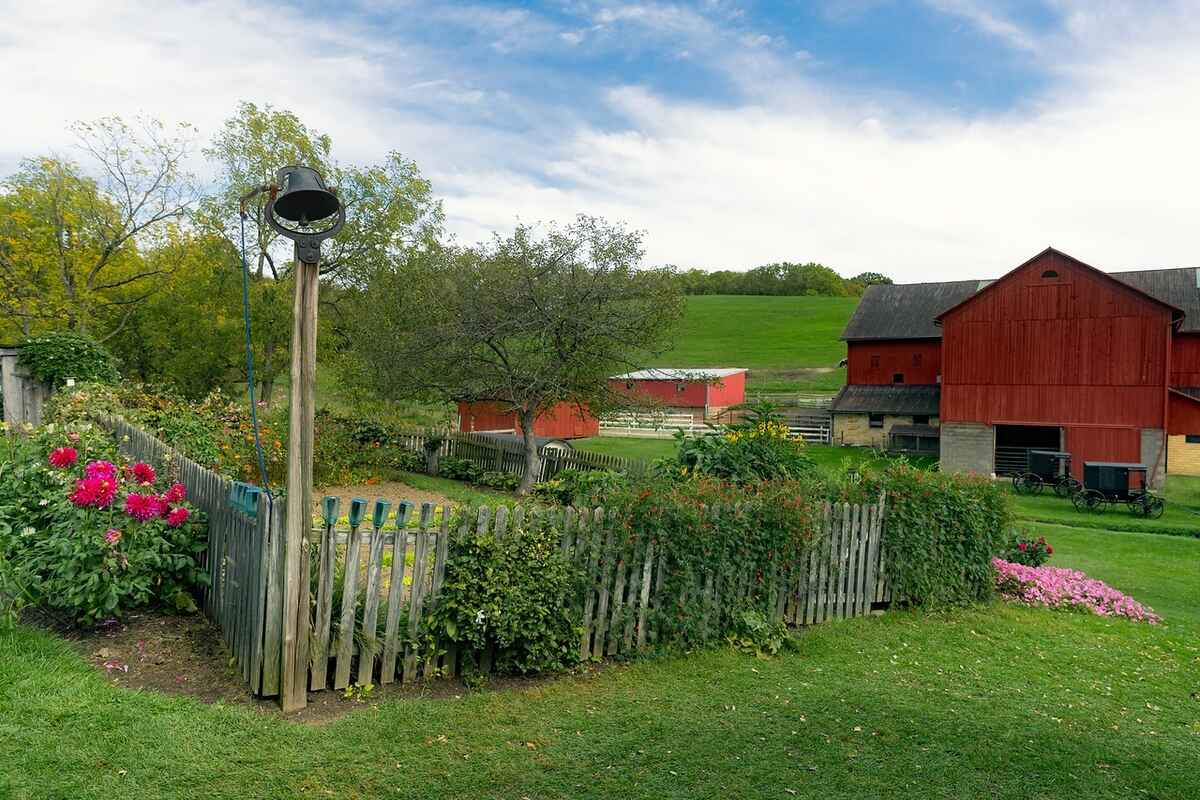
With colder temperatures and shorter days, autumn means it’s time to start thinking about how to winterize your lawn for the cold season. A few easy steps now can set your yard up for success in the spring and keep your green grass looking great. How should you prepare your lawn for winter in Ohio? Let’s take a look.
Ohio Winter Challenges
Winter in Ohio brings challenging weather conditions that can have a significant impact on your lawn’s health. With moist soil and temperatures dipping below freezing, the potential for snow and ice damage is high. Additionally, strong winds throughout the season can make moisture levels erratic, potentially leading to soil compaction.
Northeast Ohio has the additional challenge of frequent lake-effect snowfall, which can quickly accumulate and damage plant life. While Southern Ohio isn’t impacted as much by lake-effect snow, it is more susceptible to severe thunderstorms, provided there is a trigger.
On average, the northern cities of Cleveland and Akron experience more than a foot of snow during the month of January, while Cincinnati average closer to seven inches. January is the coldest month of the year for Ohio, and temperatures can range from the low 20s to above freezing.
How Can Ohio’s Harsh Winter Affect Your Lawn?
Mother Nature is unfeeling and unforgiving when it comes to winter in Ohio. Cold weather can impact your lawn in a variety of ways, including:
- Risk of diseases such as snow mold, red thread, and yellow patch
- Slow growth
- Soil compaction
Snow and ice can also wreak havoc on your lawn by smothering the grass and blocking out sunlight. This can weaken the root system, which is necessary for healthy growth. Additionally, heavy wet snow can lead to dramatic weight imbalances on the turf, killing off patches of grass.
Preparing Your Lawn for Winter in Ohio
Those first chilly fall days in Ohio are a sign that winter is just around the corner. That means it’s time to get your yard ready for the season ahead and ensure that your grass will survive the cold months ahead and be ready for spring. Follow these lawn care tips, and your grass will be ready to go for the winter!
They key is to start preparing in fall. You might ask why fall is the perfect time to start prepping your yard for winter. Well, the cooler air and warmer soil give you a window of time that you simply can’t pass up. Since the soil is workable, you can take the time to do a few add-ons to your lawn that will yield dividends come spring.
Leaf Removal and Clean Up
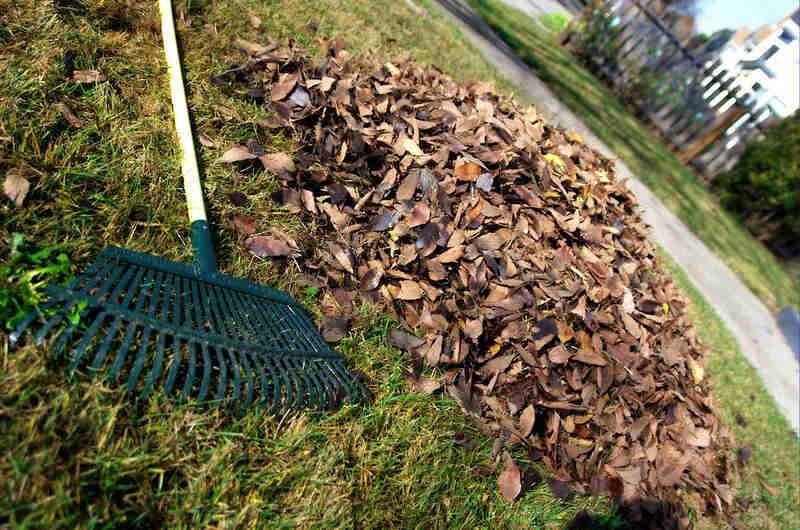
If you thought the leaves in your front yard were bad during autumn, just wait until winter! And if you don’t remove them, they’ll still be there in early spring, when they’ll become a paradise for weeds and moss. Not to mention, they’ll invite lawn pests that can destroy your grass.
To avoid that, rake up fallen leaves and debris cluttering your lawn before the snow hits! This will help your lawn get good soil contact and sunlight exposure, as well as prevent damp, dark patches where lawn diseases may grow.
Without removing leaves and other debris first, the tips listed below are near impossible.
Pro tip: Don’t let your leaf piles stay around for more than two weeks, or you’ll end up with discolored grass.
Core Aeration
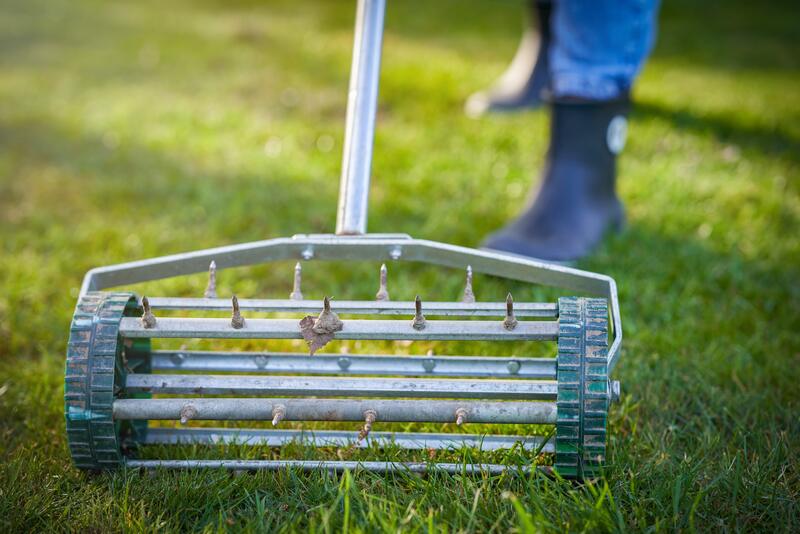
The journey to a lush lawn starts with core aeration! Core aeration is a must for winterizing your lawn, and Ohio’s climate makes fall the best time of the year to do it. Core aeration is when small plugs are pulled out of the lawn to loosen up the soil.
Aeration breaks up compacted soil, reduces thatch (a layer of old grass, roots, and soil that can prevent your lawn from absorbing the good stuff it needs to survive the winter), and helps give the soil proper airflow.
Foot traffic, mowing, and weather take their toll on your lawn over the summer and fall, making it less capable of surviving the winter. So you need to aerate your lawn to give the roots a chance to grow deep and strong.
Pro tips for aeration:
- Soil should be moist when you aerate
- Keep the cores/plugs from 2″ to 3″ in length
- Around September is the optimal time to perform core aeration in Ohio
Overseeding for a Thick and Healthy Lawn
There is no better way to help boost the overall health of your lawn than to give it a much-needed ‘pick me up’ with overseeding. Besides improving the density of your grass and reducing weeds, other benefits of overseeding include:
- Improved water retention and absorption capability of your soil
- Reduction of runoff and soil erosion
- An ample supply of moisture and nutrients
- A thicker, more consistent lawn
When it comes to overseeding in Ohio, the best time to do it is during the fall, sometime between September 15 and October 15. This timing is perfect because cooler temperatures and ample moisture are best for growing cool-season grass seeds, such as fescues and perennial ryegrass.
Pro tips for overseeding:
- Prior to overseeding, prepare your lawn by giving it a much-needed clean slate. Use your lawn mower to cut the grass down to 2 – 2.5 inches for a better seedbed. This will also reduce potential clumping during the overseeding process.
- For smaller areas, you can spread the seeds with your hands, but for larger ones, it is better to use a seed spreader.
- After the 15th of October, you will want to avoid overseeding in The Buckeye State, especially in Northeast Ohio. To maximize the grass seedlings’ survival rate, it’s best for the seed to germinate prior to the first frost.
Fertilizing Your Lawn
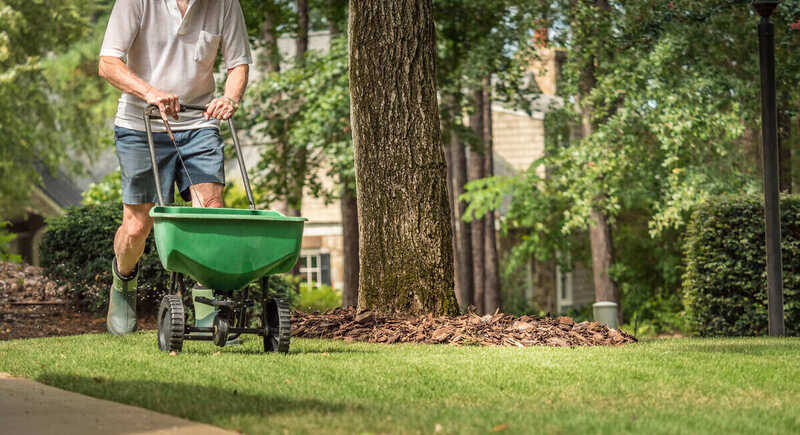
Next on the list of your yard’s winterization is fertilizing. To maximize the impact of fertilizing, it is ideal to start with a soil test. Test kits are available at most hardware stores. Alternatively, you can send a sample to the local OSU Cooperative Extension office for a more accurate test.
Once you know what your soil is lacking, it is time to select the right fertilizer. You will be looking for a bag of fertilizer with a particular nitrogen, phosphorous, and potassium ratio, referred to as “N-P-K.”
For the best results in Ohio, experts recommend twice-yearly lawn fertilization, with the first one taking place any time between early September and early October. The second round should take place in late October or early November, right after the first freeze. This would ensure that your grass will have adequate nutrients to survive the harshness of winter.
Pro tips for fertilizing:
- Use a quick-release (water-soluble) fertilizer for the second round.
- Avoid fertilizing your lawn after the end of November, as this could promote excessive growth too late into the season.
Water Well and Deeply
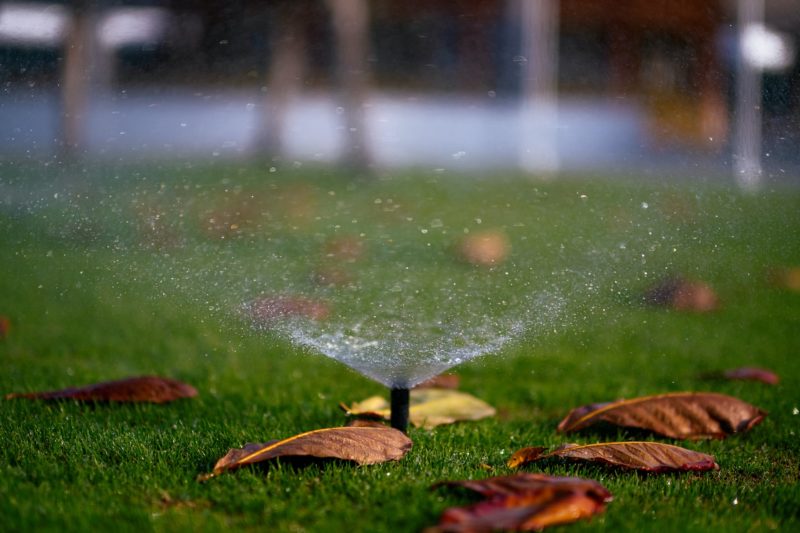
For grass in Ohio, it’s especially important not to cut back on the watering leading up to the chilly days. Make sure you give your lawn a good drink before the cold season starts by deeply and thoroughly soaking it with around 1 inch of water per week.
And, if it looks dry, don’t be scared to add an extra sprinkle as needed. An irrigation system can help make watering easier and more efficient. This way, you can make sure the grass has plenty of hydration leading up to and during the coldest winter months.
That being said, it’s equally important not to overwater your lawn. Overwatering can weaken the grass’s roots, encourage winter lawn diseases, and attract pests. Your lawn should receive no more than 1 inch of water per week, and that includes natural precipitation.
Mow One Last Time
Before putting away your lawn care equipment for winter, you have one more job to do. Mow one last time before the winter hits, around late fall (November or early December). Homeowners should change the mowing height to around 2 inches.
FAQ
In Ohio, you should start to winterize your lawn sometime in early September. That way, you can make sure your lawn has the best protection from chilly winter days. Don’t wait until the first frost arrives – it’ll be too late then!
The best thing to put on your lawn before winter is a layer of fertilizer. Fertilizer helps give the grass nutrition, which is especially important in the winter months when it can’t get as much energy from the sun.
You should also add a layer of mulch on top of your lawn. Mulching the grass clippings after you mow is a great way to add nutrients and keep the soil moist.
It’s actually not recommended to cut your lawn short in Ohio for the winter. Keeping it at 2 inches will help your grass survive the cold temperatures better.
If your lawn dies completely during the winter (as opposed to going dormant), the best thing to do is contact a professional lawn care service and have them assess the situation. They’ll be able to tell if there’s anything you can do to help the grass recover or if you’ll need to reseed the lawn in the spring.
Out of all the best grass types for Ohio, the most cold-hardy is fine fescue. This grass type also tolerates drought, shade, and lawn diseases. It’s one of the toughest choices available for your turfgrass.
Final Thoughts
Winter lawn care doesn’t have to be a chore if you stay on top of it and plan ahead. Start early, so you can take care of stuff like leaf removal, overseeding, and fertilizing before the cold really sets in. It’s worth it to put in the effort now –– your lawn will definitely thank you for it later. Plus, there’s nothing like being ahead of the game when it comes to those colder months.
But if all this is too much for you to handle, you can always hire a professional lawn care service in Ohio to take care of it for you. Whether you’re in Columbus, Cleveland, Cincinnati, or Akron, a LawnStarter pro can provide you with expert advice and do the hard work for you.
Main Image Credit: Pxhere